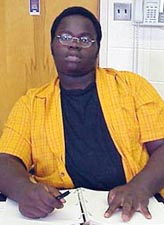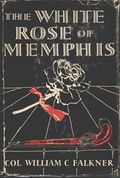Major Works
- Lady Olivia: A Novel (1895)
- The Little Brick Church (1882)
- Rapid Ramblings in Europe (1882)
- The White Rose of Memphis (1881)
- The Lost Diamond (1867)
- The Siege of Monterey (1851)
- The Spanish Heroine (1851)
- The Life and Confession of A. J. MacCannon, Murderer of the Adcock Family (1845)
Biography of William Clark Falkner
by Frederick Macon (SHS)
Colonel William Clark Falkner was born on July 6, 1826 (some references say 1825), in Knox County, Tennessee, to J. W. T. Falkner and his wife. He moved to Ripley, Mississippi, when he was seventeen. That is where he wrote his first published piece, The Life and Confessions of A. J. McCannon (Lloyd 60).
At the age of twenty, Falkner became a lieutenant in the Second Mississippi Army during the Mexican-American War. He organized a regiment and fought with them at the battle of Bull Run. He also organized a calvary regiment and fought in Virginia (Falkner 5). After the Civil War, Falkner got married and pursued his career in law (Lloyd 60). He started the Ripley Railroad Company in 1862 (Firstmonday), became rich, and wrote several novels. One of them , The White Rose of Memphis, became a best-seller. It was reissued posthumously in 1953 with an introduction by Robert Cantwell.
The Old Colonel’s son John was a lawyer and a banker. When John’s son Murry and his wife moved to Oxford in northern Mississippi, they already had three sons: William, who was four and would grow up to be a world-famous writer; Murry, three; and John, one. A fourth boy, Dean, would be born in 1907. Some people think that Faulkner’s growing up with three brothers may have helped him work out the intricate relationships of the four brothers in As I Lay Dying.
Colonel Falkner’s life was filled with controversy. For example, a man named Robert Hindman accused Falkner of slandering his name. Hindman attacked Falkner by shooting twice at him. Hindman missed both shot; but after tussling for awhile, Falkner managed to get his pocket knife, and he stabbed Hindman to death. Falkner was indicted on murder charges but was acquitted on self-defense After the trial, a friend of Hindman challenged Falkner to a duel, and Falkner accepted. Falkner won the duel and went to trial for murder again. Again, he was acquitted on self-defense.
After the conflicts, Falkner settled down again and began a life in politics. He got elected to the state legislature, and on the night of the election of 1889, he was shot and killed by a former railroad partner (Lloyd 60).
Today there is a tombstone and a statue of Col. William Clark Falkner in Ripley, Mississippi. He had been dead eight years when his famous great grandson William Faulkner (who added the “u” to the family name) was born in 1897. Falkner appears in somewhat altered form as a character in Faulkner’s writing. He is the model for Colonel Sartoris in A Rose for Emily and the novel Sartoris. In Requiem for a Nun, Faulkner describes his fictionalized version of his great-grandfather, “with his virgin blade and his pristine colonel’s braid on the courthouse balcony, bareheaded too, while the Baptist minister prayed and the Richmond mustering officer swore the regiment in.”
Much in The Unvanquished is also autobiographical in nature. Faulkner draws heavily on the stories he had grown up with. He uses stories about his great-grandfather, Colonel William Clark Falkner: his war service, his post-war business dealings, and his death. Like young Bayard’s great-grandfather John Sartoris, William Faulkner’s great-grandfather, Colonel William Clark Falkner, had fought in the Mexican War, had served in the Civil War, and commanded local troops because he had been voted out or declined rank. Both the fictional character and Faulkner’s great-grandfather had killed two men in a setting other than war and each had married two women (Bayard and Horace: The Two Faces of Faulkner).
Two rare letters from Faulkner’s great-grandfather, Colonel William Clark Falkner, were on display at the University of Mississippi in Oxford for the A Faulkner 100: The Centennial Exhibition. One is a Civil War dated letter in which Falkner expresses chagrin at the dispersal of several companies from his regiment. The other is a four-page letter that constitutes a brief history of the Ripley Railroad Company.
Colonel William Falkner was a soldier, lawyer, statesman, railroad-builder, and author who had a major influence on his great-grandson William Faulkner.
Donald Philip Duclos has written of biography of Falkner called Son of Sorrow : The Life, Works and Influence of Colonel William C. Falkner, 1825-1889, but it is currently not in print.
Timeline
- 1826-William Clark Falkner was born
- 1843-Moved to Ripley, Mississippi
- 1845-Wrote first published piece
- 1846-Fought in Mexican war
- 1849-Attacked by Robert Hindman
- 1871-Started Ripley Railroad company
- 1881-Wrote his most famous book The White Rose of Memphis, a best seller
- 1889-Falkner was murdered by a railroad company partner
Related Websites
- Ole Miss Writers site has biography of William Clark Falkner.
- Tippah County Development Foundation page on William Falkner heritage
Bibliography
- Falkner, Murry C. The Faulkners of Mississippi. Baton Rouge: Louisiana State University Press, 1967. 5-6.
- Lloyd, James B. The Lives of Mississippi Authors, 1817-1967. Jackson: University Press of Mississippi, 1981. 60-62.
- <online> Available at http://www.firstmonday.com/ (Type in firstmonday.com then click Ripley, MS, and then click on history)



